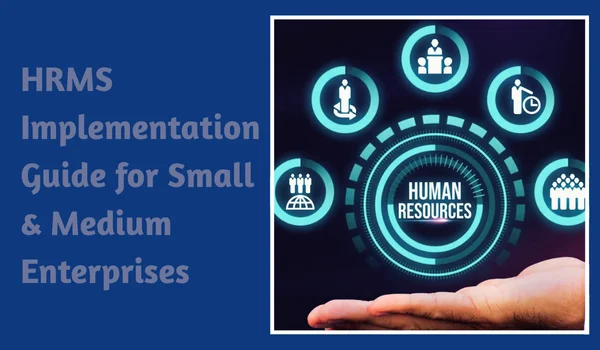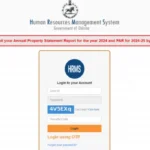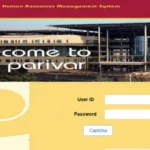In today’s fast-paced digital environment, Small and Medium Enterprises (SMEs) can no longer afford to manage their HR processes manually. From maintaining attendance records to processing payroll, managing leaves, and ensuring compliance, the tasks are complex, time-consuming, and prone to human error. That’s where HRMS (Human Resource Management System) software comes in — offering SMEs an affordable and scalable solution to automate and streamline HR operations.
But implementing an HRMS system requires careful planning and execution, especially for SMEs with limited resources. This guide walks you through the step-by-step HRMS implementation process tailored specifically for SMEs in 2025.

✅ Step 1: Identify Your HR Challenges and Goals
Start by evaluating your current HR processes and identifying pain points. These could include:
- Manual payroll calculation errors
- Difficulty tracking attendance across multiple shifts
- Poor leave management
- Lack of compliance with PF, ESI, or TDS regulations
Set specific goals such as automating payroll, reducing HR workload, improving employee self-service, or ensuring statutory compliance. Knowing your goals will help you choose the right HRMS and design an efficient implementation plan.
✅ Step 2: Choose an HRMS Suitable for SMEs
Not all HRMS platforms are created equal — especially for SMEs with budget constraints and unique needs.
Key features to look for:
- Payroll automation with compliance support (PF, ESI, TDS)
- Attendance and biometric integration
- Leave and shift management
- Employee self-service portal
- Mobile accessibility
- Scalable pricing based on employee count
Top HRMS for Indian SMEs in 2025:
- Keka HR
- GreytHR
- Pocket HRMS
- Zoho People
- ZingHR
Always request a demo or free trial and compare usability, customer support, and integration options before finalizing a vendor.
✅ Step 3: Assign an Internal Implementation Team
Even in small businesses, HRMS implementation shouldn’t be handled by one person alone. Assign a small, dedicated team that includes:
- HR representative (to manage policies and processes)
- Finance or accounts staff (to validate payroll and compliance)
- A manager or IT person (for integration and support)
This team will coordinate with the HRMS vendor and oversee data preparation, training, testing, and go-live activities.
✅ Step 4: Prepare and Migrate Data
Data accuracy is the foundation of successful HRMS usage. Collect and clean all essential employee and HR-related data, including:
- Employee names, contact details, ID numbers
- Salary structures and pay history
- Attendance and leave records
- Statutory details (UAN, PAN, Aadhaar, etc.)
Most HRMS providers offer Excel templates for bulk upload. Validate your data to eliminate duplicates or errors before migration.
✅ Step 5: Customize HRMS to Fit Your Policies
Work with your vendor to configure the system based on your company’s policies and structure.
Set up:
- Leave types and holiday calendars
- Work shifts and overtime rules
- Salary components and deduction policies
- Approval workflows (e.g., leave requests, expense claims)
- User roles and access controls
Start with essential modules like payroll, attendance, and leave management. You can add performance, recruitment, or travel modules later as your business grows.
✅ Step 6: Train Your HR Team and Employees
For SMEs, where many employees may not be tech-savvy, training is critical.
- Conduct a session for HR and managers on how to use the backend.
- Share videos or PDF guides with employees to use the self-service portal or mobile app.
- Encourage staff to check payslips, apply for leaves, or update details independently.
✅ Step 7: Test the System Thoroughly
Before going live, test all major functions such as:
- Payroll processing
- Attendance capture (biometric or mobile)
- Leave application and approval
- Payslip generation and tax calculations
Address any bugs or misconfigurations and re-test to avoid errors after launch.
✅ Step 8: Go Live and Monitor Progress
Once testing is complete:
- Announce the go-live date company-wide
- Ensure vendor support is available in the first week
- Collect employee feedback and resolve initial issues quickly
- Monitor usage reports and fix bottlenecks proactively
✅ Conclusion: Invest Today, Save Tomorrow
For SMEs, the right HRMS solution is not just a cost-saving tool — it’s a strategic investment in efficiency, compliance, and employee satisfaction. With minimal setup, modern cloud-based HRMS software can deliver enterprise-grade features tailored to smaller teams.
By following this implementation guide, SMEs can achieve a smooth HRMS rollout, reduce HR workload, and focus more on business growth and employee development.

Hi, I am Kapil Kumar, founder and chief editor of indiasvibes.com, a platform delivering the latest updates on business, finance, entertainment, and sports. With a passion for insightful storytelling, I am and my team ensures our readers receive accurate and engaging content.

